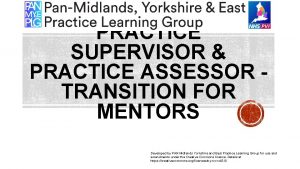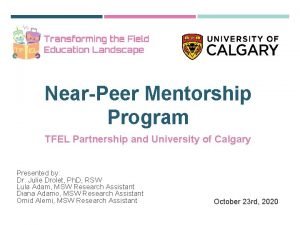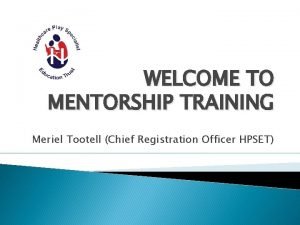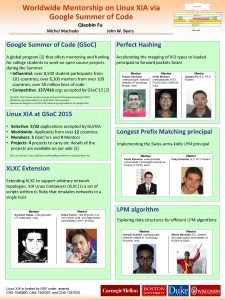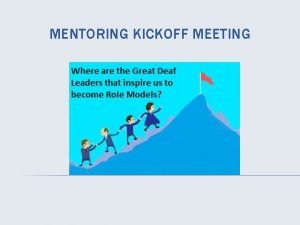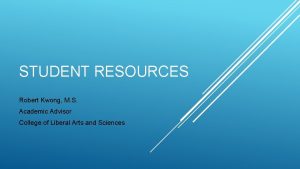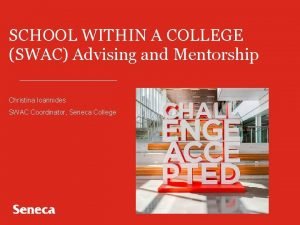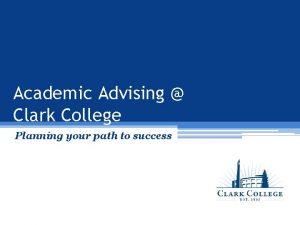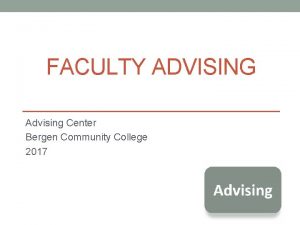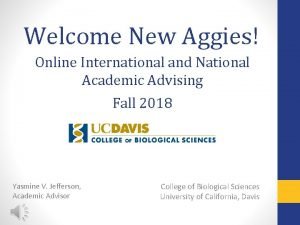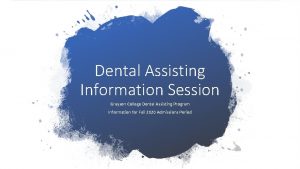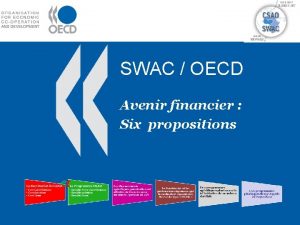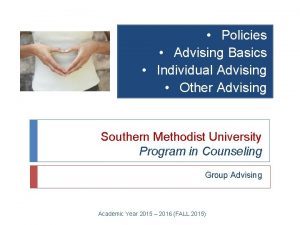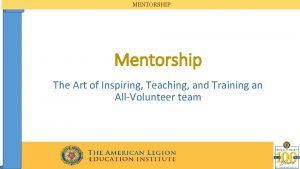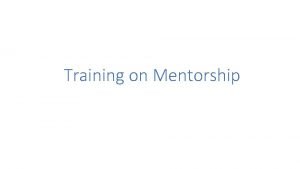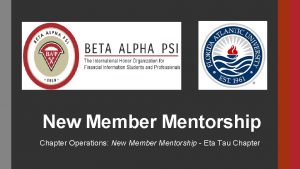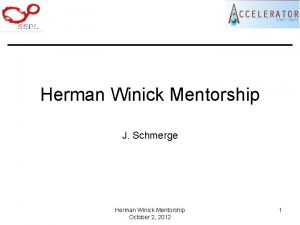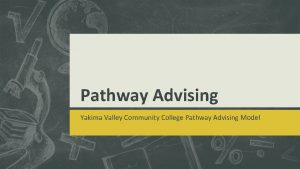SCHOOL WITHIN A COLLEGE SWAC Advising and Mentorship












- Slides: 12

SCHOOL WITHIN A COLLEGE (SWAC) Advising and Mentorship Christina Ioannides SWAC Coordinator, Seneca College

Christina Ioannides • Worked at Seneca’s SCWI team since Fall 2018. • Worked at Seneca since 2008 in various departments (Registration, Degree and Credit Transfer Office, School of English and Liberal Studies).

Agenda • Student Overview • Outreach and Communication • Advisement • Mentorship • Technology

Student Overview What kind of student is in the SWAC Program? • At risk-students. • Disengaged in the traditional classroom. • Typically seek a new learning environment. • Require ongoing support throughout their term.

Outreach and Communication • Ways administrators (we the staff) communicate with students is by: – Email (personal/ high school account, and mostly with their college account) – Telephone (call numbers on file) – Virtual chat/ videoconferencing • Communication with their teachers and professors – Teachers (daily) – Professors (weekly for courses, as often as required outside of virtual classroom)

Outreach and Communication • How often do we communicate with our students? – Differs on a student- to-student basis (may depend on the student). – With updates from the colleges (deadlines, check-ins, etc. ) • Developing a Communication Strategy with your team. – Important for your team to map out how often you reach out to the students. – Optimal to create a strategy that will work best with your team, especially with the new adjustments with COVID-19. – Keep the student’s availability in mind and their course schedules– you can work with your teachers and professors to coordinate times to meet with the students.

Student Advisement • SWAC Advisors are key! – Resourceful with information. – Are able to answer questions. – Be a guide for the college application process. • Have a system to keep track of their progress. – Using applications such as word, excel, etc. to jot down notes and student meeting progress. – Plan out how often you will connect with the students, as well as some general questions. – Live documents (such as Google sheets) are great tools for college staff and school boards on student progress.

Student Advisement • Keeping goals and learning outcomes for SWAC Advisement and Workshops. – Tools, such as checklists, that keep goals and learning outcomes in mind may be useful. – Designating themes each month for learning outcomes (such as time management) may assist with navigating through semester planning. – Using the reporting documents as a skeletal guide.

Student Mentorship • Students can be intimidated by us! Using words that help them open up during meetings will help them become more comfortable: – “How was your day/ How is your day so far? ” – “How are your courses going? ” – “Has anything exciting happened this week? ” – “What are your goals for the week? ” – “Did you try something new recently? Tell me about it!” Demonstrating your interest in them and being a good listener will help build communication between the student and the Advisor.

Student Mentorship • Sharing resources and helping students navigate through their career/ academic interests: – Helps them feel secure about looking into their interests. – Conversations about their goals and aspirations will stimulate their creativity with planning ahead. – Online resources from the program of interest (such as links and online guides) will help them visually. • E. g. , Electronic Guide to Applying for OSAP that is available on the OSAP website. – Can refer back to them outside of the meeting(s). • Sharing personal experience on related topics with the student will help them relate.

Technology • Become familiar with different ways students will gravitate to keep connected with us (they use their phones a lot). – Encourage them to access their college emails from their mobile phones. • If there any mobile apps that can be used for academic purposes related to their Dual Credit courses, then encourage them to use them. • Remind students to be record their college account information. – Will they record it on a personal note pad? – Use their devises to write a note? – Take screenshots?

Seneca College Dual Credit Office Questions? Contact us at: dualcredit@senecacollege. ca or (416) 491 -5050 ext. 22490

